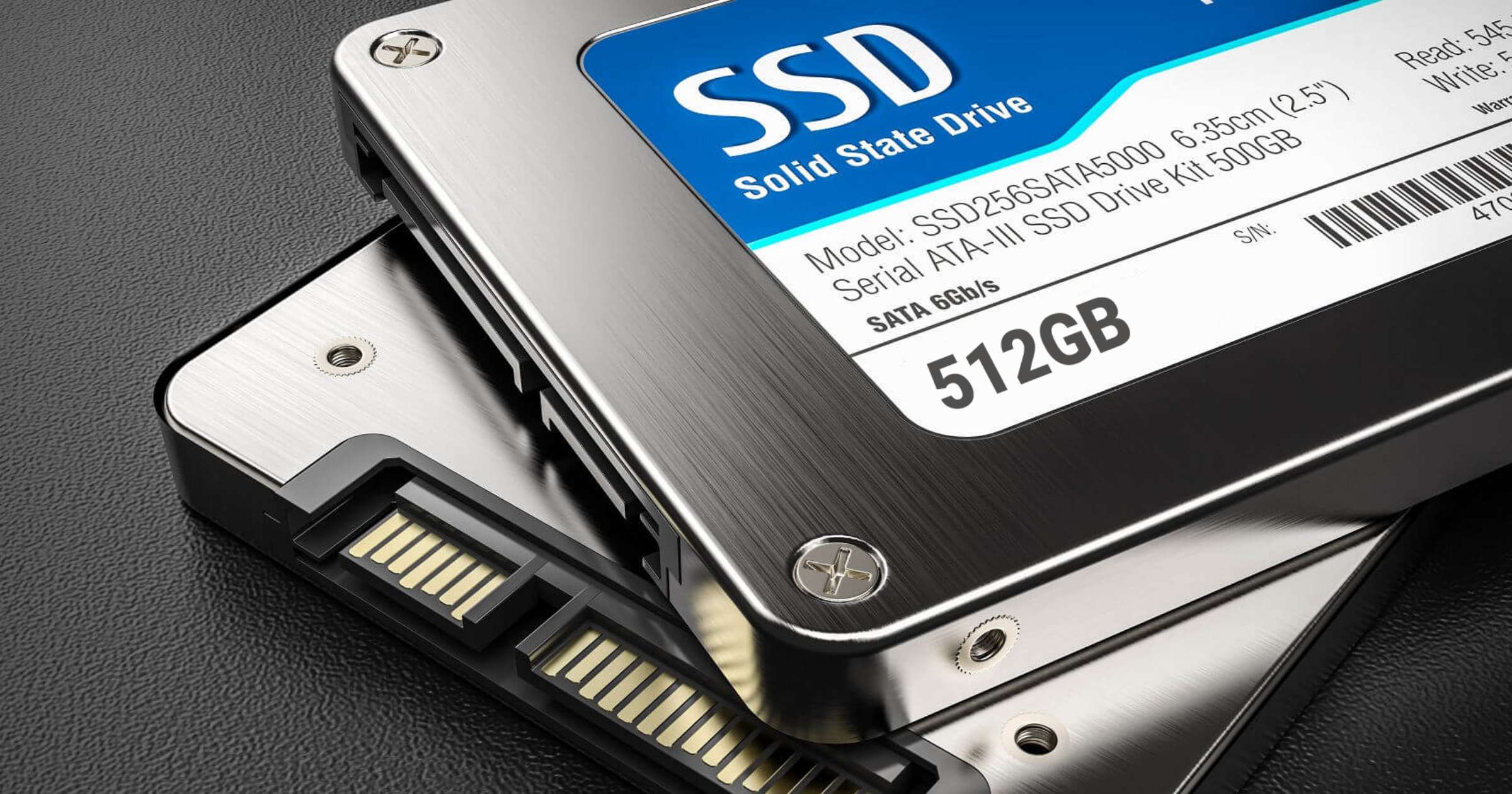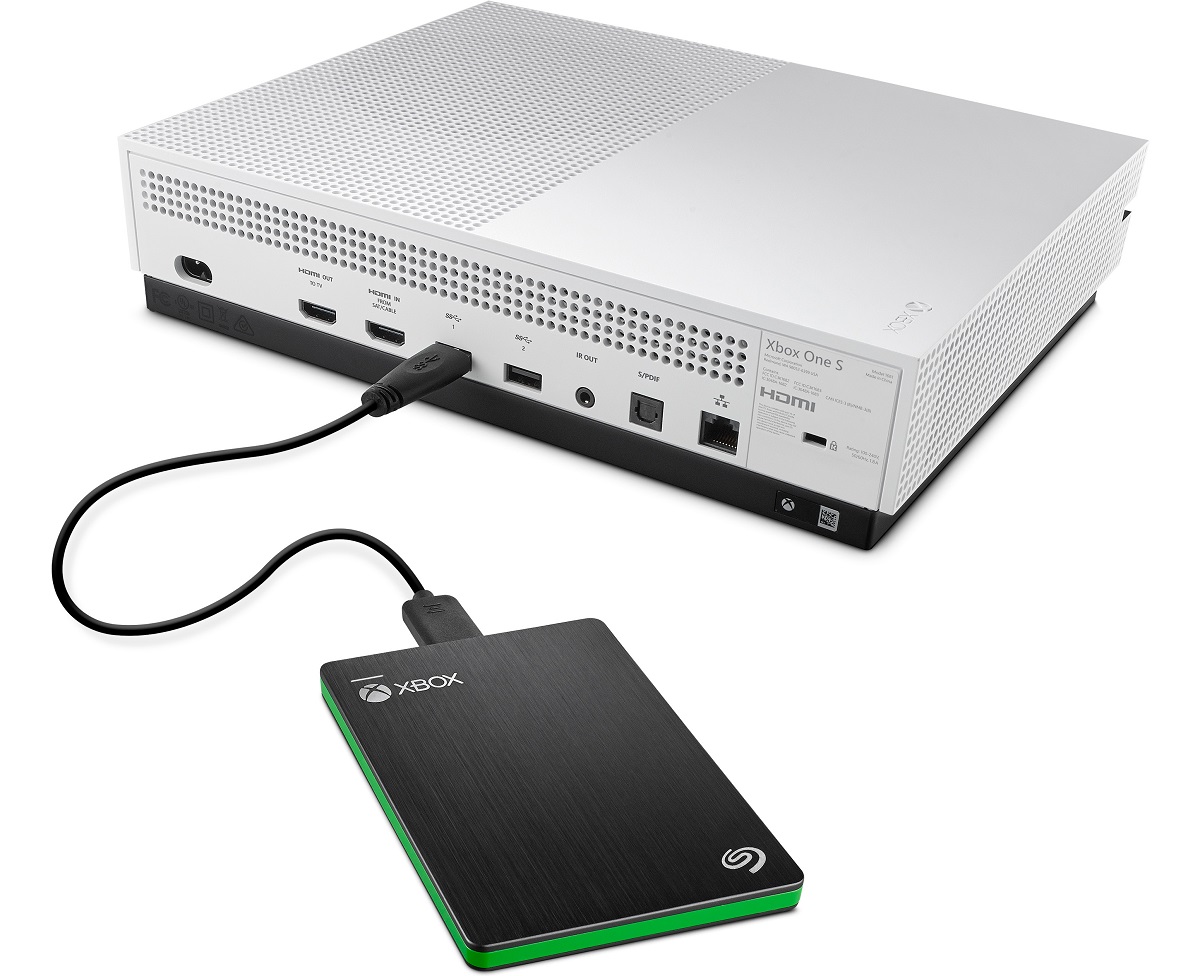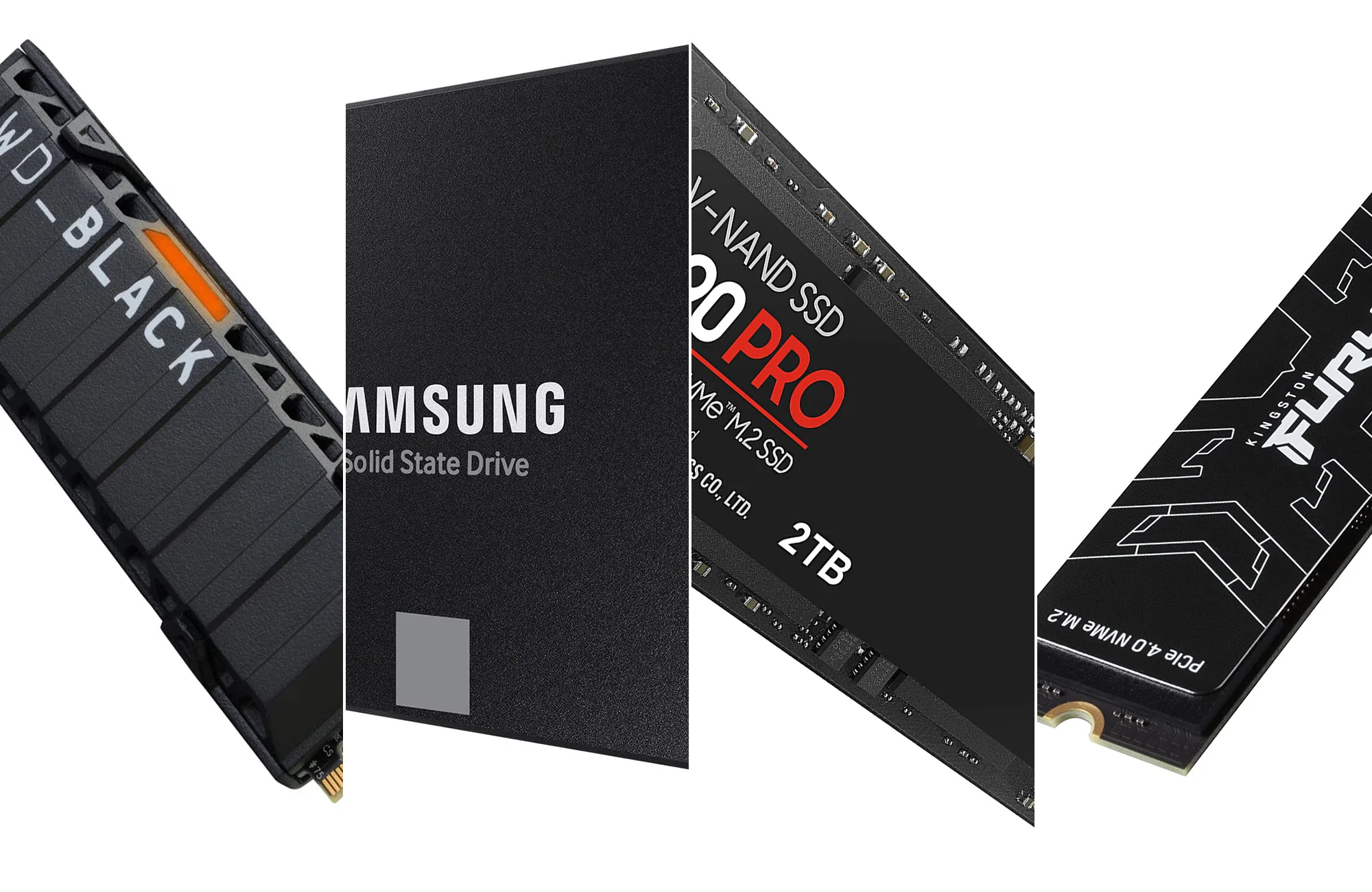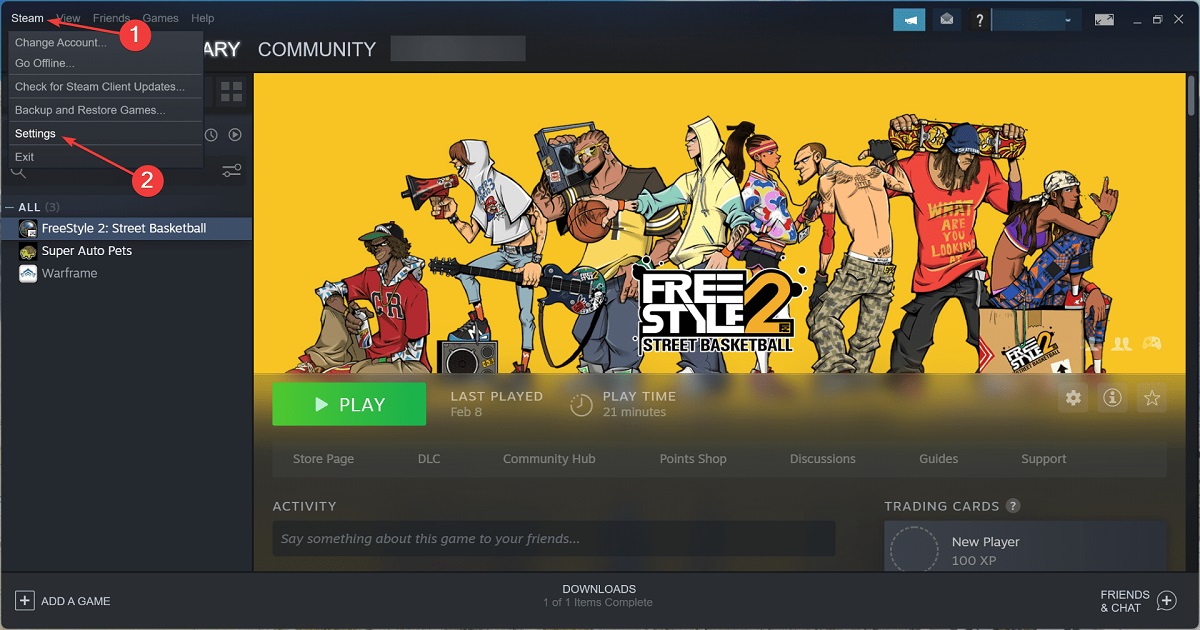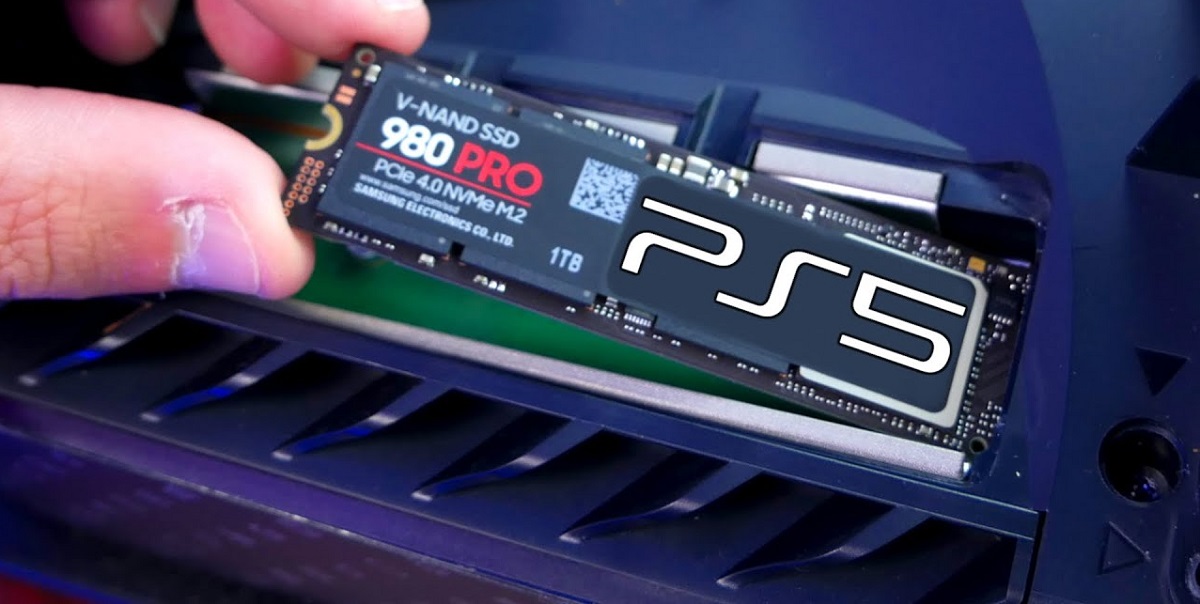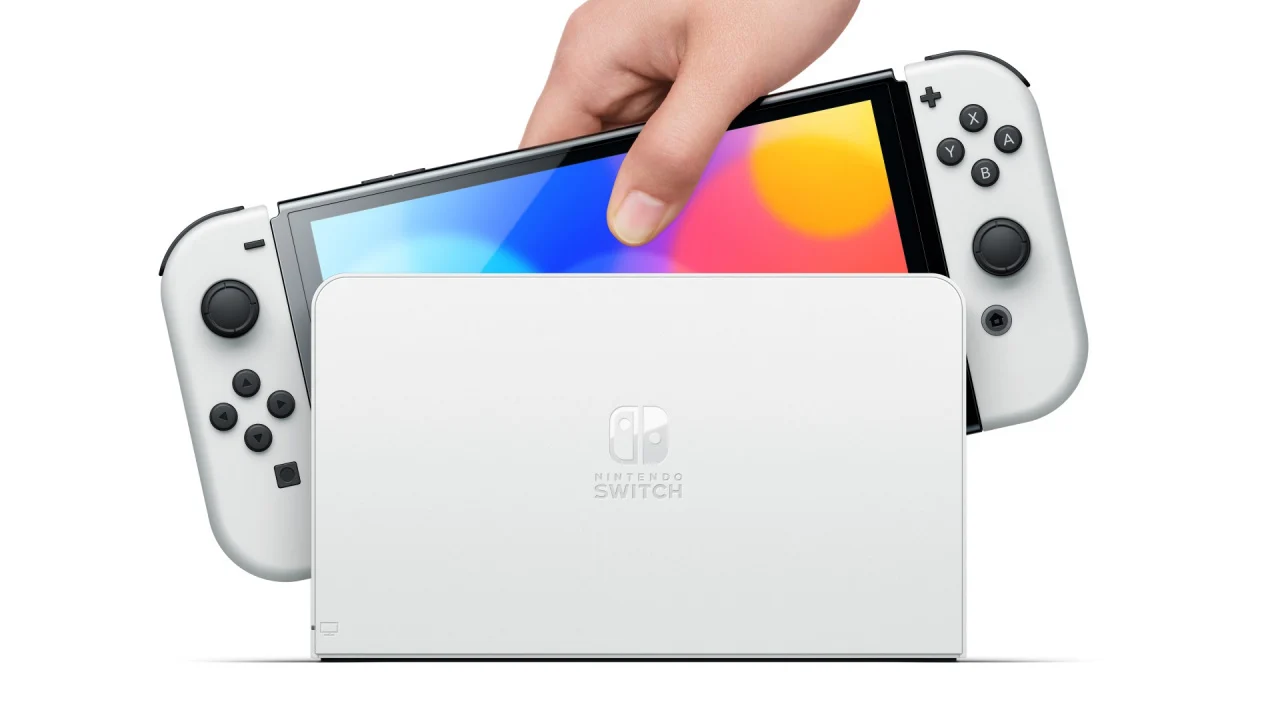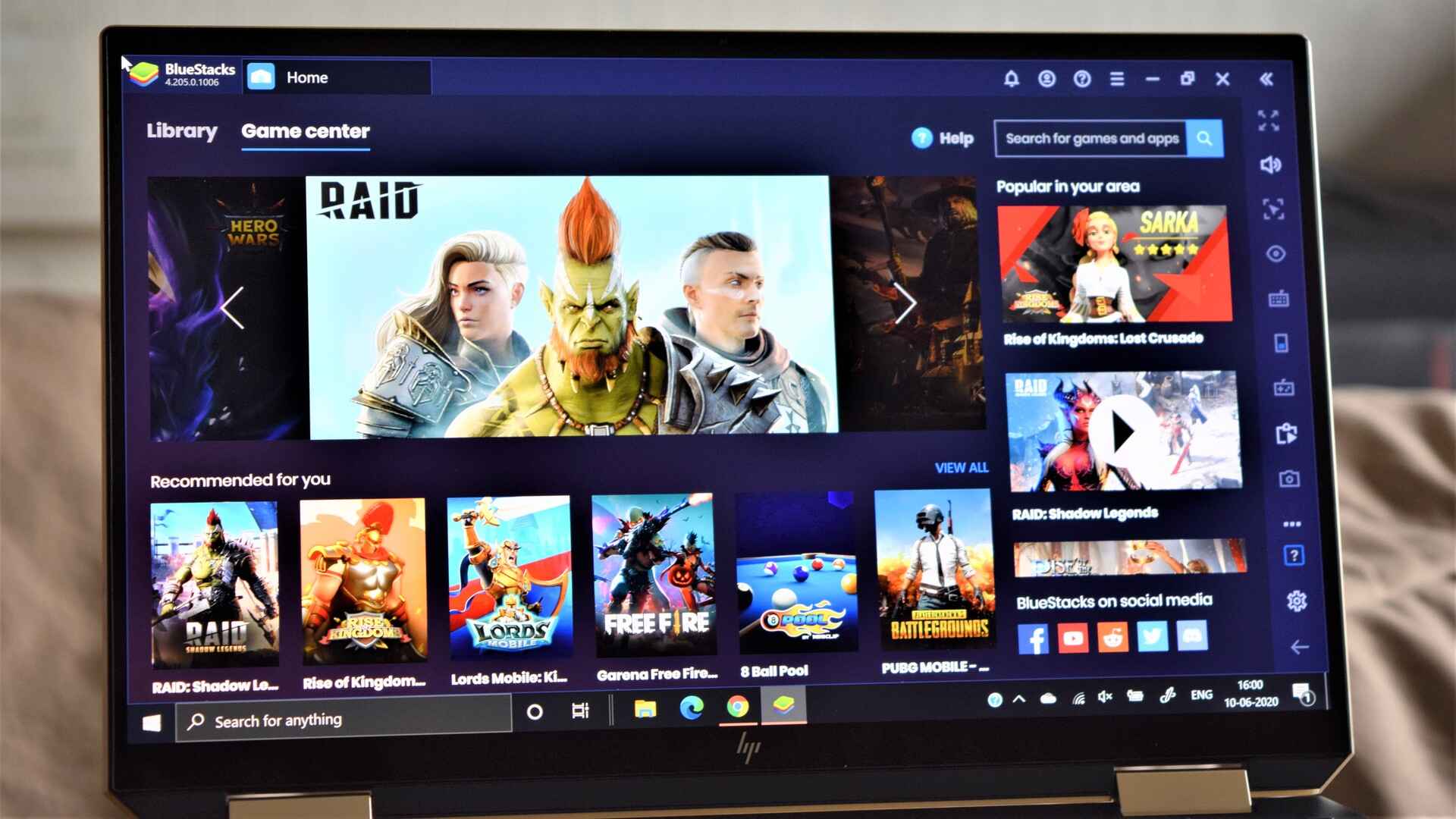Introduction
Welcome to our guide on how to download games to your SSD! If you’re a gaming enthusiast looking to enhance your gaming experience, you’re in the right place. Solid-state drives, or SSDs, have become increasingly popular due to their superior performance and faster loading times compared to traditional hard disk drives (HDDs). By downloading your games onto an SSD, you can significantly reduce load times, improve game responsiveness, and enjoy a smoother gaming experience overall.
With the rapid advancement of technology, SSDs have become more affordable and accessible, making them a viable option for gamers of all budgets. But knowing how to properly download games onto your SSD is essential to make the most of its benefits. In this guide, we’ll walk you through the step-by-step process, ensuring that you follow best practices and optimize your gaming experience on an SSD.
We’ll cover everything from checking the available storage space on your SSD to choosing the right SSD for gaming, updating firmware and drivers, and optimizing settings for optimal performance. Additionally, we’ll discuss the importance of downloading games from reputable sources and properly configuring game settings to ensure smooth gameplay without any hiccups.
By the end of this guide, you’ll have a clear understanding of how to download games to your SSD and enjoy the benefits of faster loading times, reduced lag, and enhanced overall performance. So, without further ado, let’s dive into the world of SSD gaming and take your gaming experience to new heights!
Why Download Games to SSD?
Before we delve into the process of downloading games to your SSD, it’s important to understand the benefits of storing and running games on this high-performance storage device. Here are a few reasons why downloading games to an SSD is highly recommended:
- Lightning-fast load times: One of the biggest advantages of using an SSD for gaming is the significant reduction in load times. Traditional hard drives can be slow in retrieving data, leading to long wait times during game startup and level transitions. With an SSD, games load almost instantly, allowing you to jump right into the action without any delays.
- Improved game performance: In addition to faster load times, an SSD can improve overall game performance. SSDs have faster read and write speeds compared to HDDs, allowing games to access and load assets more quickly. This means smoother gameplay, reduced stutters, and better responsiveness, especially in open-world or graphically demanding games.
- Reduced lag and hitching: Lag and hitching can be frustrating, especially in online multiplayer games where split-second reactions are crucial. By using an SSD, you can minimize lag and hitching, ensuring a more enjoyable and competitive gaming experience. SSDs can handle the simultaneous read and write operations required in online gaming, resulting in smoother gameplay and reduced latency.
- Quicker game installations and updates: Installing or updating games can be a time-consuming process, especially when dealing with large file sizes. SSDs boast faster data transfer rates, allowing for quicker game installations and updates. This means less time waiting and more time playing.
- Extended SSD lifespan: SSDs have no mechanical parts, which makes them more durable and less prone to damage from shock or vibration compared to HDDs. By downloading games directly onto your SSD, you can reduce the wear and tear on your HDD, extending its lifespan and ensuring a longer gaming experience without worrying about data loss.
By taking advantage of the speed and performance benefits offered by SSDs, you can elevate your gaming experience to new heights. Now that you understand why downloading games to SSD is highly advantageous, let’s move on to the step-by-step process of how to download games onto your SSD.
Step 1: Check Available Storage Space on SSD
Before you start downloading games to your SSD, it’s crucial to ensure that you have enough available storage space. Games can vary greatly in terms of file size, with some AAA titles taking up tens of gigabytes or more. By checking the available storage space on your SSD, you can determine how many games you can comfortably install without running out of space.
To check the available storage space on your SSD:
- Open File Explorer (Windows) or Finder (Mac).
- Navigate to “This PC” (Windows) or “Devices” (Mac) and locate your SSD drive. It’s usually labeled with the brand and capacity.
- Right-click (Windows) or Control-click (Mac) on the SSD drive and select “Properties” or “Get Info,” respectively.
- In the information window that appears, you’ll see the total capacity of your SSD and the amount of free space available.
Once you know how much free space is available on your SSD, you can make informed decisions about the size and number of games you can download. Keep in mind that it’s recommended to leave a reasonable amount of free space on your SSD to maintain optimal performance. SSDs tend to perform better when they have around 10-20% free space.
If you have limited storage space on your SSD, you may consider uninstalling less frequently played games or moving them to an external storage device to free up space for new games. This way, you can take advantage of the faster loading times and improved performance on your SSD for the games you play most frequently.
By checking the available storage space on your SSD and managing it effectively, you’ll be able to make the most of your SSD’s performance and ensure a smooth and enjoyable gaming experience. Now that you know how to check available storage space, let’s move on to the next step: choosing the right SSD for gaming.
Step 2: Choose the Right SSD for Gaming
Choosing the right SSD for gaming is a crucial step in ensuring optimal performance and a seamless gaming experience. Not all SSDs are created equal, and different factors must be considered when selecting the right one for your gaming needs. Here are some key factors to consider:
- Capacity: SSDs come in various capacities, ranging from 128GB to several terabytes. It’s essential to choose an SSD with sufficient capacity to accommodate your games and other files. Consider the size of the games you play regularly and leave room for future game installations.
- Interface: The interface of the SSD determines its compatibility with your system. The most common interface for gaming SSDs is SATA III, which offers fast data transfer speeds. However, if your motherboard supports it, consider using an SSD with a PCIe (NVMe) interface for even faster performance.
- Read and Write Speeds: SSD performance is measured by its read and write speeds. Faster read and write speeds result in shorter load times and smoother gameplay. Look for SSDs with high sequential read and write speeds for optimal gaming performance.
- Endurance: Endurance refers to the total amount of data that an SSD can write over its lifetime. Gaming involves frequent read and write operations, so it’s crucial to choose an SSD with a high endurance rating to ensure longevity and prevent data loss.
- Brand and Reputation: Opt for SSDs from reputable brands known for their reliability and performance. Reliable brands often provide better customer support and firmware updates to improve SSD performance and compatibility.
- Price: While SSDs have become more affordable over time, their prices can still vary significantly based on capacity, performance, and brand. Set a budget and find the best SSD that offers the right balance between performance and affordability.
Research different SSD models and read reviews from reputable sources to gather insights and determine which SSD aligns best with your gaming needs and budget. Consider your system’s compatibility with different SSD interfaces and ensure that your motherboard supports the chosen interface type.
Ultimately, selecting the right SSD for gaming can greatly enhance your gaming experience by providing faster loading times, improved game performance, and smoother gameplay. Take the time to assess your requirements and make an informed decision before moving forward. With the right SSD in place, you’re ready to move on to the next steps and optimize your gaming experience. Let’s proceed to Step 3: ensuring SSD health and maintenance.
Step 3: Ensure SSD Health and Maintenance
Ensuring the health and maintenance of your SSD is essential to maximize its performance and longevity. Regular maintenance practices can help optimize the performance of your SSD and keep it running smoothly. Here are some important steps to follow:
- Enable TRIM: TRIM is a command that allows the operating system to inform the SSD which blocks of data are no longer in use. Enabling TRIM helps maintain the SSD’s performance and prolong its lifespan. To enable TRIM, open the command prompt (Windows) or Terminal (Mac), and type the command “fsutil behavior set DisableDeleteNotify 0”.
- Update Firmware and Drivers: SSD manufacturers often release firmware updates that include bug fixes, performance improvements, and compatibility enhancements. Regularly check for firmware updates on the manufacturer’s website and follow the instructions to update your SSD’s firmware. Additionally, ensure that your motherboard and other hardware drivers are up to date to maintain compatibility with your SSD.
- Avoid Overfilling: It’s generally recommended to avoid filling your SSD to its maximum capacity. Overfilling an SSD can decrease its performance and lifespan. Aim to keep around 10-20% of the SSD’s capacity free. If you’re running low on space, consider uninstalling unused or large games, or moving them to an external storage device.
- Defragmentation is unnecessary: Unlike traditional hard drives, SSDs do not require defragmentation. In fact, defragmenting an SSD can wear it out and decrease its lifespan. Most modern operating systems automatically disable scheduled defragmentation for SSDs, but it’s worth confirming in your system settings.
- Backup your data: While SSDs are more reliable than traditional hard drives, data loss can still occur. Regularly backup your important files, including game saves, to an external storage device, cloud storage, or another SSD to protect against any unforeseen problems or failures.
- Clean your system: Cleaning your system periodically helps remove temporary files, caches, and unnecessary data that can accumulate on your SSD over time. Use built-in system tools or third-party software to perform system cleanups and keep your SSD operating efficiently.
By following these maintenance practices and ensuring the health of your SSD, you can maximize its performance, extend its lifespan, and prevent potential issues that may impact your gaming experience. Taking care of your SSD is crucial to enjoy the benefits of faster load times and smooth gameplay. With your SSD in optimal condition, you’re ready to proceed to the next steps and optimize your system specifically for gaming. Let’s move on to Step 4: updating SSD firmware and drivers.
Step 4: Update SSD Firmware and Drivers
Updating the firmware and drivers of your SSD is an important step in maximizing its performance and compatibility with your system. SSD manufacturers regularly release firmware updates to address bugs, improve performance, and introduce new features. Here’s how to update your SSD firmware and drivers:
- Check manufacturer’s website: Visit the website of your SSD manufacturer and navigate to the support or downloads section. Look for firmware updates specifically designed for your SSD model. Download the latest firmware update and save it to a location easily accessible on your computer.
- Backup your data: Before proceeding with the firmware update, it’s essential to back up any important data stored on your SSD. Although firmware updates are generally safe, unexpected issues can occur. By having a backup, you can protect your data in case of any unforeseen problems.
- Read the instructions: Open the downloaded firmware update file and carefully read the provided instructions. Pay close attention to any specific requirements or recommendations mentioned by the manufacturer. Some firmware updates may require you to burn the update to a USB drive or use a specific tool for installation.
- Disconnect other storage devices: To prevent any accidental data loss or interference, it’s advisable to disconnect any other storage devices, such as HDDs or additional SSDs, during the firmware update process. This will ensure that the update is specifically applied to the intended SSD.
- Run the firmware update: Follow the instructions provided by the manufacturer to run the firmware update. This may involve running an executable file, booting from a USB drive, or using specialized software. Ensure that your computer is plugged into a stable power source and avoid interrupting the process until it is complete.
- Update drivers: In addition to updating the SSD firmware, it’s also important to keep the drivers for your SSD and other hardware up to date. Visit the manufacturer’s website for your motherboard and other hardware components and download the latest drivers. Updating drivers can improve compatibility and ensure optimal performance between your SSD and other system components.
Regularly checking for and applying firmware updates and driver updates are crucial maintenance steps to keep your SSD running at its best. These updates can address performance issues, security vulnerabilities, and compatibility problems, improving overall system stability and ensuring the smooth functioning of your games.
With your SSD firmware and drivers up to date, you’re ready to move on to the next steps in optimizing your SSD settings and downloading games onto your SSD. Let’s proceed to Step 5: optimize SSD settings for gaming.
Step 5: Optimize SSD Settings for Gaming
Optimizing your SSD settings specifically for gaming can further enhance its performance and ensure a seamless gaming experience. By tweaking certain settings, you can maximize the potential of your SSD and improve game loading times, responsiveness, and overall system performance. Here are some steps to optimize your SSD settings for gaming:
- Enable AHCI mode: AHCI (Advanced Host Controller Interface) mode allows your SSD to fully utilize its capabilities. To enable AHCI mode, access your computer’s BIOS settings by restarting your computer and pressing the designated key (usually Del, F2, or F12) during the boot process. Navigate to the SATA Configuration or Storage Configuration section and set the SATA Mode to AHCI.
- Set power management to high performance: Adjusting your power management settings to high performance can prevent your system from entering low-power mode, ensuring that your SSD operates at its full potential. Go to your computer’s power settings and select the high-performance option instead of the power-saving or balanced mode.
- Disable disk defragmentation: SSDs don’t require defragmentation, and running defragmentation on them can reduce their lifespan. Ensure that automatic defragmentation is disabled for your SSD to prevent unnecessary wear and tear.
- Enable write caching: Enabling write caching can improve write performance on your SSD. Go to the device manager, locate your SSD, right-click, and select Properties. In the Policies tab, check the “Enable write caching on the device” option.
- Disable hibernation: Hibernation can generate large hibernation files that consume valuable SSD space. Disabling hibernation can free up storage space and prevent unnecessary write operations on your SSD. Open the command prompt with administrator privileges and type “powercfg -h off” to disable hibernation.
These optimizations can help fine-tune your SSD settings for gaming performance. However, keep in mind that some settings may vary depending on your operating system and specific SSD model. Refer to your SSD manufacturer’s documentation or their website for model-specific recommendations.
By optimizing your SSD settings for gaming, you can further enhance the speed, responsiveness, and overall performance of your system while enjoying a superior gaming experience. With your SSD settings optimized, let’s move on to the next steps and dive into the process of choosing the right games to download and install on your SSD. Proceed to Step 6: Choose the right games to download.
Step 6: Choose the Right Games to Download
When it comes to choosing games to download onto your SSD, it’s essential to consider factors such as game size, playability, and your personal preferences. While SSDs offer faster loading times and improved performance, it’s still important to prioritize which games to install to make the most of your available storage space. Here are some tips to help you choose the right games to download:
- Select your favorite games: Start by selecting the games that you play most frequently or those that are your absolute favorites. These are the games that you want to experience with faster loading times and improved performance, enhancing your overall gaming experience.
- Consider game size: Take into account the size of the games you want to download. Some games can be massive, requiring dozens of gigabytes of storage space. If your SSD has limited capacity, prioritize games with smaller file sizes or consider installing larger games on secondary storage devices.
- Look for graphically demanding games: Graphically intensive games can benefit greatly from the faster read and write speeds of an SSD. Games with detailed environments, large open worlds, or high-resolution textures can significantly benefit from the reduced loading times and improved game performance on an SSD.
- Consider multiplayer and competitive games: Multiplayer and competitive games often require quick load times to join matches and minimize delays during gameplay. Installing these types of games on an SSD can provide a competitive edge and a more seamless online gaming experience.
- Plan for future game releases: If you’re eagerly anticipating the release of new games, consider leaving some space on your SSD for those future installations. This way, you can ensure that you’ll have sufficient storage available when your most anticipated games become available.
Ultimately, the choice of games to download onto your SSD depends on your personal gaming preferences and available storage space. Striking a balance between game size, personal favorites, and graphically demanding titles can help you optimize your SSD usage and ensure that you have a smooth and enjoyable gaming experience.
With your game selection in mind, it’s time to move on to the next step: learning how to safely download games from respectable sources. Proceed to Step 7: Download games from respectable sources.
Step 7: Download Games from Respectable Sources
When downloading games to your SSD, it’s crucial to ensure that you are obtaining them from reputable and trustworthy sources. This helps protect your computer from malware, viruses, and other security threats that could compromise your gaming experience and the overall health of your system. Here are some guidelines to follow when downloading games:
- Official game platforms: Stick to official game platforms and digital distribution services such as Steam, Epic Games Store, GOG, or Origin. These platforms have robust security measures in place to protect users and provide legitimate game downloads.
- Authorized resellers: If you prefer purchasing games from other sources, ensure that they are authorized resellers. Sites like Humble Bundle, Green Man Gaming, and Fanatical are reputable sellers that provide legitimate game keys and downloads.
- Read reviews: Before downloading games from any source, read reviews and check user feedback to ensure the legitimacy and overall quality of the games. This helps you make informed decisions and avoid potentially harmful or low-quality downloads.
- Avoid pirated games: While it may be tempting to download pirated games due to their cost, it’s strongly advised against doing so. Pirated games often come bundled with malware, viruses, or other security risks that can harm your computer and compromise your personal information.
- Use an anti-malware program: Install and regularly update a reputable anti-malware program. This helps to protect your computer from potential threats when downloading games or other files from the internet.
By following these guidelines and downloading games from respectable sources, you can ensure that you are getting legitimate, high-quality downloads while safeguarding your computer from security risks. This way, you can fully enjoy your gaming experience without worrying about compromising your system’s integrity.
Now that you understand the importance of downloading games from reputable sources, let’s move on to the next step: installing the games onto your SSD. Proceed to Step 8: install games to SSD.
Step 8: Install Games to SSD
Now that you have chosen the games you want to download and have obtained them from reputable sources, it’s time to install them onto your SSD. Installing games directly onto your SSD allows you to take full advantage of its fast loading times and improved performance. Here’s how to install games to your SSD:
- Open the game installer: Locate the downloaded game file on your computer. Depending on the platform or source, the game file could be in various formats, such as an installer executable or a ZIP file. Extract the file if necessary.
- Run the installer: Double-click on the game installer to launch it. Follow the on-screen instructions provided by the installer to begin the installation process. You may be prompted to agree to the software’s terms and conditions or make choices regarding the installation directory.
- Choose the installation location: During the installation process, you will typically have the option to select the installation location. Browse to your SSD drive and select it as the destination for the game installation. This ensures that the game is installed directly onto your SSD rather than a different storage device.
- Follow the installation prompts: Proceed with the installation process by following the prompts and options provided by the installer. Pay attention to any customization options, such as selecting additional features or choosing the game’s installation directory within your SSD.
- Wait for the installation to complete: Depending on the size and complexity of the game, the installation process may take some time. Allow the installer to complete the installation and avoid interrupting the process. Once the installation is finished, you can proceed to launching the game.
By installing games directly onto your SSD, you’ll benefit from faster loading times and improved performance. Ensure that you have enough free space on your SSD to accommodate the game’s size and try to prioritize installing your most frequently played or graphically demanding games on your SSD for the best experience.
With your games installed on your SSD, you’re one step closer to enjoying faster game loading times and optimized performance. In the next step, we’ll cover how to configure game settings for optimal performance. Proceed to Step 9: configure game settings for optimal performance.
Step 9: Configure Game Settings for Optimal Performance
Once you have installed your games onto your SSD, it’s important to configure the in-game settings to maximize performance and ensure the best gaming experience possible. By optimizing the graphics and performance settings, you can make the most of your SSD’s speed and power. Here’s how to configure game settings for optimal performance:
- Graphics settings: Adjust the graphics settings in the game to optimize performance without sacrificing visual quality. Lowering certain settings, such as shadows, anti-aliasing, or ambient occlusion, can improve frame rates and reduce the strain on your hardware, resulting in smoother gameplay.
- Resolution settings: Set your game resolution to match your monitor’s native resolution or choose a lower resolution for better performance. Lower resolutions require less GPU power, resulting in higher frame rates and smoother gameplay. Experiment with different resolutions to strike the right balance between performance and visual quality.
- Frame rate limits: If your game allows, consider setting an FPS (frames per second) limit. Limiting the frame rate can help prevent your hardware from working at full capacity, reducing heat and power consumption. This can result in a more stable gaming experience.
- Update game patches and drivers: Regularly check for game patches and updates released by the game developers. These updates often include performance improvements and bug fixes that can enhance your gaming experience. Additionally, keep your graphics card drivers up to date to ensure compatibility and optimal performance.
- Disable unnecessary background processes: Close any unnecessary applications and background processes that may be running while gaming. These processes can consume system resources and impact performance. By freeing up system resources, your games can run more smoothly on your SSD.
- Monitor temperature and optimize cooling: Gaming can heat up your system, affecting performance. Monitor your system’s temperatures using software tools and ensure that your computer is adequately cooled. Proper cooling helps prevent thermal throttling and maintains consistent performance during gaming sessions.
Remember, it’s crucial to find the right balance between performance and visual quality based on your hardware capabilities. Each game may have different settings, so it’s important to adjust them individually to achieve the optimal performance for each specific game.
By configuring game settings for optimal performance on your SSD, you can enjoy smoother gameplay, reduced lag, and faster loading times. Having mastered this step, you’re ready to move on to the final step: enjoying faster game loading and performance on your SSD. Proceed to Step 10: enjoy faster game loading and performance on SSD.
Step 10: Enjoy Faster Game Loading and Performance on SSD
Congratulations! You have successfully completed the steps to download, install, and optimize games on your SSD. Now, it’s time to sit back, relax, and enjoy the benefits of faster game loading times and improved overall performance. Here are some reasons why you’ll appreciate gaming on your SSD:
- Lightning-fast game loading times: SSDs provide significantly faster data access speeds compared to traditional hard drives. This means that games stored on your SSD will load faster, allowing you to jump right into the action without any significant wait times. Say goodbye to long loading screens!
- Quick level transitions: Open-world and graphically demanding games often have frequent level transitions. With an SSD, these transitions will be almost seamless, as the game can access and load necessary data rapidly. You can enjoy uninterrupted gameplay and a more immersive gaming experience.
- Improved responsiveness: SSDs not only enhance game loading times but also offer improved overall responsiveness. Actions such as navigating menus, accessing inventory, and interacting with in-game objects will be faster, resulting in a smoother gaming experience.
- Reduced lag and stuttering: Lag and stuttering can be frustrating and disrupt the gameplay experience. By installing games on an SSD, you can expect reduced lag and stuttering due to the faster data transfer speeds. This ensures a more fluid and enjoyable gaming experience.
- Optimized performance in multiplayer games: In multiplayer games, quick load times and reduced lag become even more critical. With an SSD, you can have a competitive edge by getting into matches faster and experiencing smoother gameplay, allowing you to fully immerse yourself in the online gaming world.
- Extend your SSD’s lifespan: By utilizing an SSD for gaming, you can minimize wear and tear on your traditional hard drive. This can extend the lifespan of your hard drive and allow you to enjoy faster game loading times for a more extended period.
With faster game loading times, improved responsiveness, and reduced lag, gaming on your SSD will undoubtedly enhance your overall gaming experience. Enjoy the seamless gameplay, stunning graphics, and immersive worlds that your favorite games have to offer.
Remember to regularly maintain your SSD, keep your games and drivers up to date, and manage your storage space to ensure optimal performance over time. By continuing to follow best practices, you can continue to benefit from the speed and efficiency of gaming on an SSD for years to come.
Now that you are equipped with the knowledge to enhance your gaming experience, it’s time to dive into your favorite games and enjoy the incredible performance of your SSD. Happy gaming!
Conclusion
Congratulations on completing our guide on how to download games to your SSD and optimizing your gaming experience. By following these steps, you have learned how to make the most of your SSD’s speed, efficiency, and performance, resulting in faster game loading times and an overall improved gaming experience.
We started by checking the available storage space on your SSD and selecting the right SSD for gaming. Ensuring the health and maintenance of your SSD, updating firmware and drivers, and optimizing SSD settings were important steps in maximizing its potential. We then discussed how to choose the right games to download, emphasizing the importance of downloading from reputable sources.
After installing the games onto your SSD, we focused on configuring game settings for optimal performance. By adjusting graphics settings, resolution, and frame rate limits, you can strike a balance between performance and visual quality. Lastly, we highlighted the benefits of enjoying faster game loading times, reduced lag, and improved responsiveness on your SSD.
Remember to regularly update your SSD’s firmware and drivers, maintain adequate storage space, backup your data, and keep your system cool to ensure optimal performance and longevity.
Now, armed with your newly acquired knowledge, you can fully enjoy the benefits of your SSD’s speed and efficiency while immersing yourself in the exciting world of gaming. Get ready to experience faster game loading times, smoother gameplay, and an overall enhanced gaming experience.
Happy gaming!







